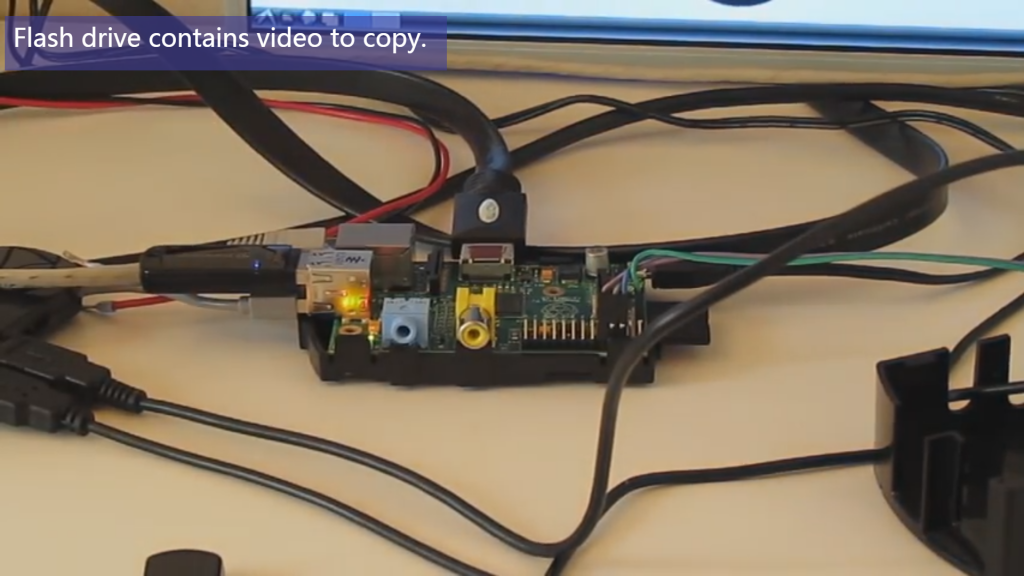

- #RASPBERRY PI ADD DTS DECODER SERIAL#
- #RASPBERRY PI ADD DTS DECODER DRIVER#
- #RASPBERRY PI ADD DTS DECODER SOFTWARE#
On some systems, many such sequences can execute as as single programmed DMA transfer. The sequence is “atomic” in the sense that no other spi_message may use that SPI bus until that sequence completes. A spi_message is used to execute an atomic sequence of data transfers, each represented by a struct spi_transfer.
#RASPBERRY PI ADD DTS DECODER DRIVER#
In our Linux Driver we have handled the above SPI READ/WRITE using SPI Message system. After the word has been shifted in on the MOSI line and the last clock has been sent, xCS should be pulled high to end the WRITE sequence.Īfter the last bit has been sent, DREQ is driven low for the duration of the register update, marked “execution” in the figure. Then the WRITE opcode (0x2) is transmitted via the MOSI line followed by an 8-bit word address. Thus the Tail of the Data Queue keeps growing while at the same time the Head of the Pool queue buffer keeps shrinking as this operation is continued for 2048 times, which is total number of our Pool queue buffer 32-byte transmit samples.įirst, xCS line is pulled low to select the device. After copy the 32-bytes of User space buffer, we move & fix the Queue element to the Tail of our Data queue buffer. Copy the 32-bytes of Mp3 Data passed from the User space buffer using copy_from_user kernel method to the 32-byte Queue Head element we took out in step 1.Ĥ. Move the Head to the next element in the Pool queue bufferģ. From, the Pool Queue Buffer Head we take our 32-byte elementĢ. shows the initial state,ĭuring the WRITE System call we would do something like this with our Queues.ġ. Initially the Pool Queue buffer is initialized & allocated with 2048 x 32-bytes of Transmit array element & the Data Queue Buffer is initialized with only Head element. The two Queue buffers are the Pool Queue Buffer & the Data Queue Buffer. I have created two Queue Buffers here in my Driver. The way in which we transfer the Encoded MP3 Bytes from Rpi3 to VS1053 is by calling the WRITE system call to VS1053 Linux Driver. And the remaining SPI Standard Signals SPI_MISO, SPI_MOSI & SPI_CLK of Rpi3 are fed to the corresponding MISO, MOSI & SCLK lines of the Audio Codec.ĭata Write & Transfer to Audio Codec - Operation summar y SPI_CE0_N is assigned to xCS & SPI_CE1_N is assigned to xDCS of the Audio Codec. The two Chip select, SPI0.CS0 & SPI0.CS1 of Rpi3 are assigned to control the Chip select lines for SCI & SDI interfaces of the Audio Codec VS1003/VS1053.
#RASPBERRY PI ADD DTS DECODER SOFTWARE#
New functions may be added with software and 4 GPIO pinsĪs,we can see, we have assigned two GPIO Pins of Rpi3, GPIO 26 to xRST, Reset Pin & GPIO 13 to DREQ Pin of the Audio Codec Board.

Separate operating voltages for analog, digital and I/O Stereo earphone driver capable of driving a 30Ohm load High-quality on-chip stereo DAC with no phase error between channels In addition to the basic decoding, it is possible to add application specific features, like DSP effects, to the user RAM memory.Ī few features that can be listed are as follows :ĭecodes MPEG 1 & 2 audio layer III (CBR +VBR +ABR) WMA 4.0/4.1/7/8/9 all profiles (5-384kbit/s) WAV (PCM + IMA ADPCM) General MIDI / SP-MIDI filesĮncodes IMA ADPCM from microphone or line input

#RASPBERRY PI ADD DTS DECODER SERIAL#
The decoding is controlled via a serial control bus. The input stream is decoded and passed through a digital volume control to an 18-bit oversampling, multi-bit, sigma-delta DAC. VS1003 receives its input bitstream through a serial input bus, which it listens to as a system slave. It contains a high-performance, proprietary low-power DSP processor core VS_DSP4, working data memory, 5 KiB instruction RAM and 0.5 KiB data RAM for user applications, serial control and input data interfaces, 4 general purpose I/O pins, an UART, as well as a high-quality variable sample-rate mono ADC and stereo DAC, followed by an earphone amplifier and a common buffer. VS1003/VS1053 is a single-chip MP3/WMA/MIDI Audio Decoder and ADPCM encoder. A Linux Device Driver for Audio Codec, VS-1003/VS-1053 on Linux kernel 4.4 for Rpi3


 0 kommentar(er)
0 kommentar(er)
